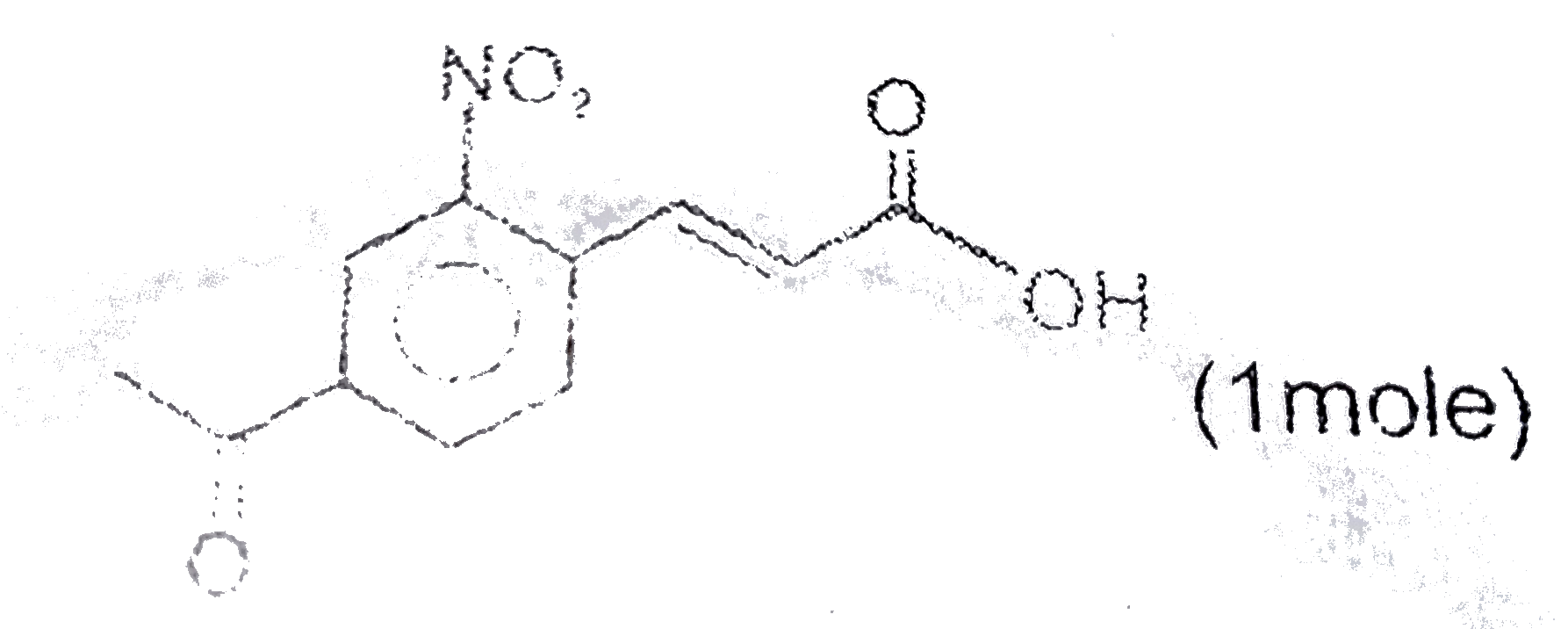When one mole of F atoms are ionised to , the energy released is X Joules. Then :-
X Joules is sufficient to ionise 1 mole of gaseous Cl into
X Joules is sufficient to ionise 1 mole of gaseous F into
X Joules is sufficient to ionise 1 mole of gaseous F into as well as 1 mole of gaseous Cl into
Less than 1 mole of gaseous F or Cl atom will be ionised to
The correct Answer is:D
To solve the question, we need to analyze the energy changes involved in the ionization of fluorine and chlorine atoms. Here’s a step-by-step breakdown:
Step 1: Understand the Ionization Process
When one mole of fluorine (F) atoms is ionized to form fluorine anions (F⁻), energy is released. This process can be represented as:
F→F−+Energy
Step 2: Energy Released
The amount of energy released during the ionization of one mole of fluorine atoms is given as X Joules. This means that when one mole of F atoms is converted to F⁻, X Joules of energy is released.
Step 3: Compare with Chlorine
The question asks whether this energy X Joules is sufficient to ionize one mole of gaseous chlorine (Cl) into Cl⁺. The ionization of chlorine can be represented as:
Cl→Cl++Energy
Step 4: Analyze the Energy Requirements
Since both fluorine and chlorine belong to the same group in the periodic table (Group 17 - Halogens), they exhibit similar chemical properties, including ionization energies. However, the ionization energy of chlorine is generally lower than that of fluorine because chlorine is larger and has a lower effective nuclear charge compared to fluorine.
Step 5: Conclusion
Given that X Joules is the energy released when one mole of fluorine is ionized, this amount of energy is sufficient to ionize one mole of gaseous chlorine into Cl⁺. Thus, we can conclude that:
The correct option is that X Joules is sufficient to ionize 1 mole of gaseous chlorine into Cl⁺.
Final Answer
The answer to the question is:
X Joules is sufficient to ionize 1 mole of gaseous chlorine into Cl⁺.
---
When one mole of fluorine (F) atoms is ionized to form fluorine anions (F⁻), energy is released. This process can be represented as:
F→F−+Energy
The amount of energy released during the ionization of one mole of fluorine atoms is given as X Joules. This means that when one mole of F atoms is converted to F⁻, X Joules of energy is released.
The question asks whether this energy X Joules is sufficient to ionize one mole of gaseous chlorine (Cl) into Cl⁺. The ionization of chlorine can be represented as:
Cl→Cl++Energy
Since both fluorine and chlorine belong to the same group in the periodic table (Group 17 - Halogens), they exhibit similar chemical properties, including ionization energies. However, the ionization energy of chlorine is generally lower than that of fluorine because chlorine is larger and has a lower effective nuclear charge compared to fluorine.
Given that X Joules is the energy released when one mole of fluorine is ionized, this amount of energy is sufficient to ionize one mole of gaseous chlorine into Cl⁺. Thus, we can conclude that:
The answer to the question is:
X Joules is sufficient to ionize 1 mole of gaseous chlorine into Cl⁺.
Topper's Solved these Questions
- INORGANIC CHEMISTRYBOOK - ALLENCHAPTER - INORGANIC CHEMISTRYEXERCISE - PERIODIC TABLE (MATCH THE COLUMN TYPE QUESTIONS)
5 Videos
- INORGANIC CHEMISTRYBOOK - ALLENCHAPTER - INORGANIC CHEMISTRYEXERCISE - CHEMICAL BONDING
119 Videos
- HYDROGENBOOK - ALLENCHAPTER - HYDROGENEXERCISE - EXERCISE-5
17 Videos
- Ionic EquilibriumBOOK - ALLENCHAPTER - Ionic EquilibriumEXERCISE - All Questions
37 Videos
Similar Questions
In an atom bomb, the energy is released because of the.
View SolutionHow much energy is released when one ATP is cashed?
View SolutionGive one word or a phrase for the following statement:
The energy released when an electron is added to a neutral gaseous isolated atom to form a negatively charged ion.
View SolutionGive one word or a phrase for the following statement: The energy released when an electron is added to a neutral gaseous isolated atom to form a negatively charged ion.
View SolutionThe energy released by fission of one U235 atom is 200 MeV. Calculate the energy released in kWh, when one gram of uranium undergoes fission.
View SolutionIn a thermodynamic process, pressure of a fixed mass of gas is changed in such manner that the gas releases 30 joule of heat and 18 joule of work was done on the gas. If the initial internal energy of the gas was 60 joule, then the final internal energy is 8x joule. find the value of x
View SolutionThe binding energy of nucei X and Y are E1 and E2, respectively. Two atoms of X fuse to give one atom of Y and an energy Q is released. Then,
View SolutionThe pressure of given mass of a gas in a thermodynamic system is changed in such a way that 20 joule of heat is released from the gas and 8 joule of work is done on the gas. If the initial internal energy of the gas was 30 joule then final internal energy will be
View SolutionWhen one mole of the given compond reacts with sodium metal then how many moles of H2 gas will release ?

View SolutionDuring the formation of a bond when atoms approach each other the potential energy decreases.(T/F)
View Solution
